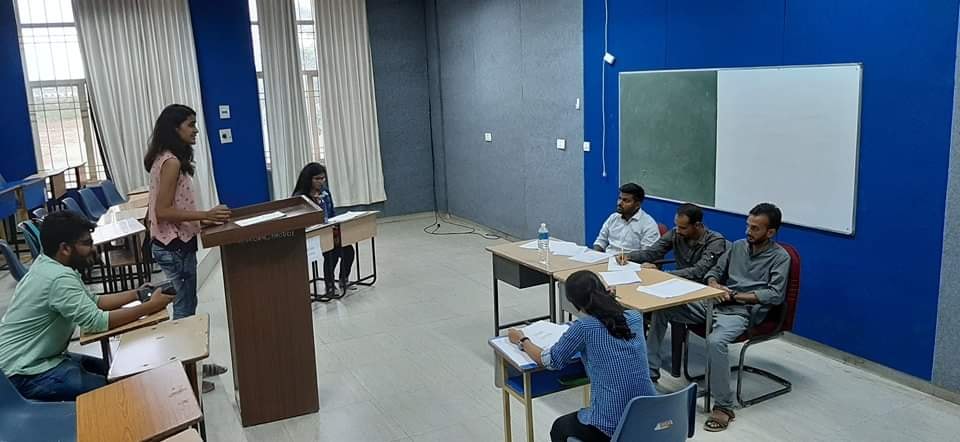nticipatory Bail under Section 438 of the Code of Criminal Procedure, 1973 (CrPC). The rationale behind this recommendation was to prevent the unwarranted detention of an accused in police custody without reasonable grounds, which could negatively impact the investigation process, intimidate witnesses, and violate their constitutional right to liberty under Article 21. To address this issue, CrPC was amended to include a provision for pre-arrest bail.
Pre-arrest bail, provided under Section 438 of the Code of Criminal Procedure (CrPC), aims to protect the interests of the accused by granting them the opportunity to seek bail before their arrest, thus avoiding unnecessary harassment and detention. This provision was included in the CrPC to strike a balance between the rights of the accused and the need for effective investigation. Its purpose is to prevent unjustified detention and violation of the fundamental right to liberty. Pre-arrest bail allows the accused to seek bail before their arrest, ensuring that the investigation is not hindered while safeguarding their rights.
The article discusses the debate surrounding the availability of pre-arrest bail under special laws and the conflicting interpretations by different High Courts. While some High Courts have denied pre-arrest bail under special laws, others have allowed it. This lack of uniformity has created confusion and inconsistency in the implementation of pre-arrest bail. The article emphasizes the need for the Supreme Court to intervene and provide clear guidelines to ensure consistency and prevent uncertainty for the accused charged under special laws.
BALANCING JUSTICE: THE ART OF INTERPRETING PENAL STATUTES THROUGH STRICT AND LIBERAL CONSTRUCTION
In legal interpretation, “liberal construction” allows courts to align words with the state’s objectives, while the mischief rule focuses on the purpose of the law and the golden rule emphasizes ordinary meaning. Exemption clauses may require liberal interpretation. Strict construction involves narrow and precise interpretation, following the literal rule. It ensures fair application of laws and protects rights, often in taxation and criminal legislation. Strict construction should only be used in penal law if conditions are met. Judges employ a combination of these rules to interpret statutes effectively.
In penal statutes, the rule of strict construction prevents expansive interpretations beyond the fair meaning of the language or what can be reasonably justified by the provisions. The rule of liberal construction is also utilized in conjunction with strict construction in penal statutes, resolving any ambiguity in favour of the defendant. The gravity of criminal legislation is also assessed based on strict construction criteria, as outlined by Maxwell.
In summary, strict construction is a legal theory that emphasizes narrow and precise interpretations of legal documents and statutes, particularly in taxation and criminal legislation, adhering to the literal rule. The rule of strict construction in penal statutes ensures limitations on expansive interpretations, while the rule of liberal construction aids in resolving ambiguities in favor of the defendant.
THE CASE AGAINST ANTICIPATORY BAIL: WHY IT COULD BE DETRIMENTAL TO JUSTICE
The JJ Act is a special legislation that aims to provide a child-friendly mechanism to cater to the needs of child delinquents. The legislators were conscious not to punish the child delinquents but to provide them with a support system to help them rehabilitate. This is reflected in the Act, which nowhere uses the term “accused” for a child delinquent but instead uses “child in conflict with law” or “child in need of care and protection.”
The Telangana High Court in the case of Mohammed Bin Ziyad vs The State Of Telangana has taken a strict interpretation of this distinction and held that a writ petition moved by a child delinquent for the grant of anticipatory bail is not maintainable under the JJ Act. The court held that section 12(1) of the JJ Act provides a more flexible recourse, as irrespective of the offence committed (bailable or non-bailable), bail is granted as a matter of right. The court further opined that a child in conflict with law is not arrested but apprehended, and providing recourse to section 438 of CrPC would inevitably curb the liberties available under the JJ Act.
The Telangana High Court’s strict interpretation of the Juvenile Justice Act has caused controversy by disallowing child delinquents from seeking anticipatory bail under the CrPC. The court believes that the JJ Act’s separate mechanism for handling child delinquency should not be undermined. Critics argue that the JJ Act’s bail provisions may not offer sufficient protection for child delinquents in certain circumstances. They contend that allowing anticipatory bail under CrPC would provide an additional layer of protection and ensure the full respect of their rights.
The issue remains contentious, with differing views on the matter. Ultimately, resolution may require the intervention of the Supreme Court to provide clarity on the applicability of anticipatory bail under the JJ Act and ensure the complete protection of child delinquents’ interests.
In the case of Piyush minor through his natural v. State Of Haryana, The High Court has held that anticipatory bail is not available to juveniles under the Juvenile Justice Act. Upon apprehension, child delinquents are immediately produced before a juvenile justice board, which must grant bail unless exceptional circumstances exist. The Act prohibits placing children in police lock-ups or jails.
In the case of Kapil Durgwani vs The State Of Madhya Pradesh, the Madhya Pradesh High Court interpreted section 12 of the JJ Act narrowly, stating that it only gives power to the JJB to consider bail applications, and that considering an application for pre-arrest bail falls outside of its scope. As there is no specific provision in the JJ Act for anticipatory bail, the court held that ordinary legislation cannot be applied and that a child in conflict with law cannot receive the benefit of anticipatory bail.
The courts’ consideration of the beneficiary provisions of the Juvenile Justice Act in their rulings is seen as incorrect since it does not serve the purpose of the Act. Granting pre-arrest bail should be the general rule for minor offenses committed by juveniles, and Juvenile Justice Boards should have the authority to grant anticipatory bail.
EMPOWERING JUVENILES: WHY ANTICIPATORY BAIL SHOULD BE GRANTED TO JUVENILE OFFENDERS
The legal principle of “Lex Specialis Derogat Legi Generali,” which means that special laws take precedence over general laws, applies when there is a direct conflict or inconsistency between the two. This principle guides the interpretation of the law. In this case, there is no indication in the JJ Act that anticipatory bail would not be applicable. The same positiong was taken by the Allahabad high court in the case of Shahaab Ali v. State of U.P.
In simpler terms, if a special law and a general law contradict each other, the special law will take precedence. However, there is no conflict between the Juvenile Justice Act and the applicability of anticipatory bail. Therefore, the court has allowed anticipatory bail in this case.
The Kerala High Court recently delivered a judgment in the case of Mr. X v State Of Kerala which it relax ed the distinction between the terms “arrest” and “apprehend.” The court allowed anticipatory bail to a juvenile and stated that under Section 46(1) of the Code, arrest can only be made if there is an element of touch or confinement by a police officer or any other authorized person. The court granted anticipatory bail to a juvenile, highlighting that the term “apprehend” in the Code is equivalent to “arrest” and denying anticipatory bail does not directly align with statutory interpretation..
In the case of Kureshi Irfan Hasambhai vs State of Gujarat, a judgment was passed where the differentiation between the terms “arrest” and “apprehend” was eliminated. The court granted pre-arrest bail to the juvenile, thereby allowing relief from being arrested beforehand.
In the case of Krishna kumar v state of Haryana, the Punjab and Haryana High Court delivered a judgment where it was stated that the Juvenile Justice Act is social legislation that prioritizes the social integration and rehabilitation of children. The Act is based on principles of reform rather than punishment. If the legislators had intended to deny anticipatory bail to juveniles, an exception would have been carved out in the Act. Therefore, the court inferred that the denial of pre-arrest bail and non-applicability of Section 438 was the intention of the lawmakers while enacting the Juvenile Justice Act in 2015.
The Juvenile Justice Act focuses on rehabilitating and integrating children, not punishing them. The intention of the lawmakers was seen as denying pre-arrest bail to juveniles, according to a court ruling. The judgments by the Kerala and Gujarat High Court have brought a new perspective to the issue, considering the purpose of the laws when deciding on anticipatory bail for children. Despite arguments that children cannot be denied anticipatory bail, courts should consider the purpose behind the laws, especially when there is no direct conflict between different laws.
CONCLUSION
In legal interpretation, two approaches have emerged: strict construction and liberal construction. The Juvenile Justice Act, 2015, focuses on rehabilitating children in conflict with the law and preventing them from becoming hardened criminals. The use of the term “child in conflict with law” instead of “accused” reflects this emphasis on rehabilitation. Therefore, a liberal and constructive approach should be taken when interpreting the provisions of the Act. This means considering the intent and purpose behind the law rather than relying solely on the literal meaning of the words used. In cases where the Act is silent on a particular matter, courts should turn to ordinary legislation to fulfil the objectives of the Act. For instance, when a juvenile seeks anticipatory bail under the Criminal Procedure Code, a liberal approach should be taken to allow such recourse, even if the Act does not explicitly address it. The overall goal is to provide juveniles with the best opportunity to reintegrate into society and lead productive lives.
* 4th year B.A. LL.B. Student, National University of Study and Research in Law, Ranchi
** 4th year B.A. LL.B. Student, National University of Study and Research in Law, Ranchi







Leave a comment